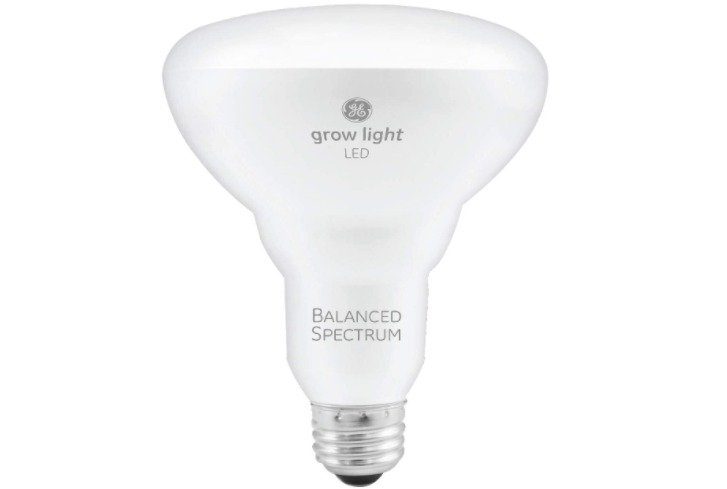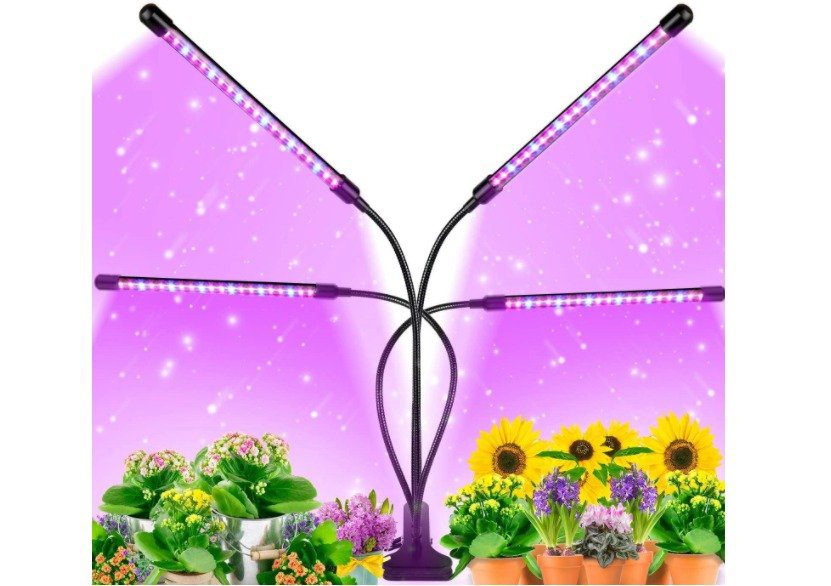LED lights are a type of light that has been growing in popularity. More and more people are using them to grow plants indoors. The question is, can I use a normal LED light to grow plants? Let’s find out…
Can I Use a Normal LED Light To Grow Plants?
Yes, you can use a normal LED light to grow plants. However, you may not get the same results as you would with dedicated LED grow lights that offer full-spectrum light.
First off, let’s talk about why these types of lights work so well for growing plants indoors.​
There are quite a few reasons actually… But firstly they produce very little heat compared to other lighting options, which means it will be easier for your plant to grow without being scorched or cooked.
Secondly, they have a longer lifespan than other types of lighting meaning it will be cheaper, in the long run, to use them as your source of light for growing plants indoors. And lastly, LED lights are very energy efficient, which is great if you don’t want to bump up your electricity bill too much!

LED Grow Lights Vs Regular LED Lights?
LED grow lights are better than regular LED lights because they emit electromagnetic radiation, which can be more closely resembled by what we get from our sun. As such, they are the best option for helping with photosynthesis and plant growth!
That said, it is possible to grow healthy plants with normal LED lights. However, you will likely need more of them and may have trouble growing some types of plants indoors.
Should I Use LED Grow Lights?
LED grow lights can be a great option for people who are looking to grow plants indoors. They are great for adding supplemental light to your houseplants, which will keep them alive and healthy.
They also work very well for plants that require a certain intensity of light, such as flowering plants and vegetables – they can help them grow to their full potential!
So yes! LED grow lights can be used for indoor gardening and will allow you to get healthier results than regular LED lights. If you have the money, then it would probably be better to invest in full-spectrum ones that closely resemble sunlight for the best plant growth effects.
However, if you don’t want or can’t afford LED grow lights, then it is possible to use regular LED lighting – just be prepared that it may take longer for your plant(s) to reach maturity.​
What Color Led Light Is Best for Plants?
When it comes to the best color LED for plants, the key is matching your plants’ needs with a light that has plenty of red and blue in order for them to grow taller. It’s also helpful if the light has some green and yellow hues.
While plants can grow under white light, it is not as important as other colors. It’s important to have just the right amount of each wavelength.
Are Purple Led Lights Good for Plants?
Yes, purple LED lights are good for plants. You can use them as a supplement to normal LED lights or even on their own with certain types of houseplants! This is why you see so many purple LED grow lights.
But it’s not just because they look cool – in fact, purple LED lights only isolate certain blue or red in order to benefit plants the most! Below are my favorite (Amazon link) grow lights that are purple.

Can I Use My Desk Light To Grow Plants?
Yes, you can use your desk lamp to grow plants indoors. In fact, it may be better than some other methods, such as fluorescent lighting that isn’t designed for growing plants indoors.
However, if you want the best results then it’s wise to invest in full-spectrum LED grow lights – they will help your plant(s) thrive and reach their maximum potential without too much effort from yourself.
What Should I Consider When Shopping for Led Grow Lights?
When shopping for LED grow lights it’s important to consider the type of growing you’ll be doing. For example, will you be using them as a supplemental light or your main source? How much money can you afford to spend and what do other people think about their quality and durability?
Also, take care when reading customer reviews – some might not understand how LED lighting works properly! And make sure that whatever brand/model of grow-light you go with is right for your specific plant(s)!
LED Grow Light FAQs
If you want to learn even more about LED grow lights, keep reading to learn some common questions people have when shopping for them!
What is the Best Wattage LED Grow Light?
It depends on what type of growing you’ll be doing. If it’s just plant maintenance then any wattage will likely do – although there are benefits to 300-400 watts, especially if you want your plants to reach their full potential. However, 800+ watt grow lights can work well with larger houseplants or even outdoor gardening! It all depends on how much money and time you’re willing to invest in your indoor garden/plant(s).
Where Can I Find Used Led Grow Lights For Sale?
Unfortunately, finding used LED grow lights isn’t easy since they tend to get broken often (at least minifigure scale ones). If you can’t afford new ones or can’t find any used LED grow lights for sale, then it’s possible to use regular LED lighting. However, you just need to be prepared that your plants may not reach their full potential!
How Long Will My LED Grow Light Last?
This will depend on certain factors such as wattage being used, what plants you’re growing, and how often it is used. Many LED grow lights last for around 50,000 hours so they should last a very long time – but keep in mind that this will be affected by certain factors such as wattage being used and if the light gets damaged!
Are CFL Bulbs Good for Growing Plants Indoors?
CFL bulbs are fine if they’re full-spectrum ones designed specifically for plants – however, many cannot produce enough light on their own without being supplemented by another form of lighting such as LED.
That said, it can be very difficult to grow plants with CFL bulbs even if you supplement them properly – but they might make a good temporary solution until you get something better!
Conclusion
In conclusion, it is possible to use LED lights as your source of light for growing plants indoors. However, if you want the best results, then you should really consider getting dedicated grow lights that emit full-spectrum light – like the ones found on this page.
I hope you have enjoyed this blog post and that you will check out some of the other gardening posts on my website.
Tim is an avid gardener from the UK. He was the founder of PlantCarer.com from 2021 to Sep 2023. He sold PlantCarer.com to Aaron. He has since started his own business called Seed To Supper, which provides new gardeners all the materials you need in a box (pots, seeds, compost and instructions) to grow your own delicious and nutritious vegetables and herbs from start to finish – no garden required.

